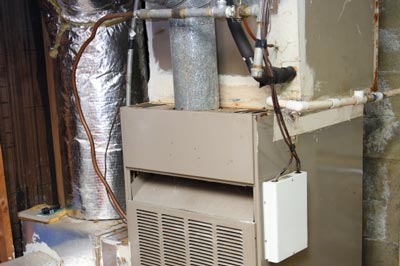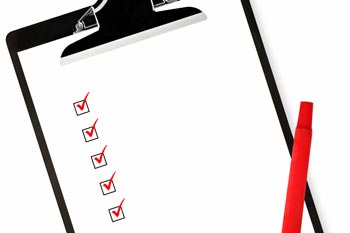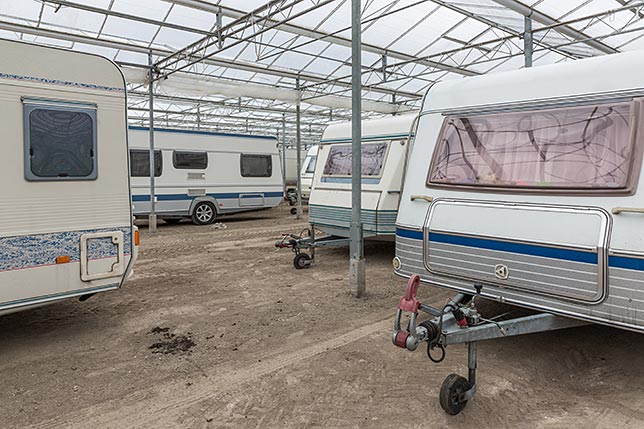Harris, Reed & Seiferth
|
|
If you smell gas, get everyone out. Use your neighbor's phone to call a qualified repair person or the gas company immediately. If possible, shut off the gas main from outside the home. Caution: Never attempt to repair gas lines yourself.
https://www.foremost.com/learning-center/furnace-safety.asp
0 Comments
Are we in the midst of an "arctic hurricane" like the media describes? I'm not so sure. Even at 0 degrees with a -30 wind chill, it seems like it always gets this cold during the winter in Michigan. Nonetheless each year we see the same dilemmas that happen when the weather gets chilly. Surprisingly, one of the most common problems that homeowners face this time of year is frozen water pipes. If you know of anyone that is in this predicament right now like I do, be sure to pass along this information to safely get their pipes thawed:
What should you do if a water pipe freezes? You should make sure it never happens again! When the water freezes, it tries to expand inside the pipe. It pushes against the sides of the pipe, as well as any nearby valves, seams and faucets. The freezing action of the water is more than capable of rupturing any pipe. Unfortunately, a water pipe may freeze even if you have taken precautions. Whatever the cause, it's important that you thaw out your pipe for two reasons:
Here are some methods to thaw out frozen pipes: CAUTION!: Before you try any of these methods, first open the faucet the frozen pipe supplies. The steam you create while heating the pipe can burst the pipe if it doesn't have an escape. Method #1: Use electric heat tape on the pipe, and wait for it to thaw out. This is a good method to use because it slowly thaws the pipe, which means it reduces wear and tear on the pipe itself. CAUTION!: Remember to use only heat tape certified by a nationally recognized testing laboratory for use with mobile homes. Be careful never to wrap the heat tape back over itself. This could cause the heat tape to overheat and start a fire. Method #2: Wrap the pipe with several layers of cloth or toweling and pour hot water over the cloth / toweling. Repeat several times until the pipe is unfrozen. Method #3: Direct a heat lamp on the pipe itself. Place the lamp at least a foot away from the pipe. Cover adjacent areas with a layer of aluminum foil so the heat does not scorch these materials. Make sure the heat lamp is on dry ground. Even better, plug it into a ground Fault Circuit Interrupter (GFCI) outlet. CAUTION!: Do not use any direct heating method if the frozen pipe is next to a gas pipe! Call a professional for help. Method #4: Hold a hand-operated hair dryer to the pipe, and slowly move up and down the length of the frozen section. Make sure you are standing on dry ground. Because you are working this close to water, plug the dryer into a GFCI protected outlet. You will know the pipe is thawed out when water starts to trickle out of the open faucet. Let the water run for a while to completely clear the pipe. Then, close the faucet and check for leaks. CAUTION!: Do not use a propane torch to thaw out frozen pipes. Do not use a propane torch even if it has a fire spreader attachment. This is not only a fire hazard, bit it's also a quick way to destroy your plastic plumbing pipes. We want you to be safe in your home and prevention is the key. I love electricity. Without it, we wouldn't have Electric Avenue, The Electric Company, the Electric Slide, or Electric Light Orchestra. But as awesome as electricity is, it also causes approximately 53,600 home fires every year. That statistic comes from the Electrical Safety Foundation (ESFi), sponsor of Electrical Safety Month and author of some great educational materials about the electrical hazards in your home. As an owner of a home built in 1947, their PDF, Know the Dangers in Your Older Home, caught my eye. Since the U.S. Census bureau says that half of all homes in this country were built before 1973, others may be interested in this information as well. Why is electrical safety important in older homes? Think of all of the things you plug in today that weren't around when your house was built: garage door openers, electric coffee makers, TVs, DVRs and computers, to name a few. As awesome as electricity is, it also causes approximately 53,600 home fires every year.Here's a short checklist from ESFi to help you identify potential problems in your home: Lightbulbs
Information from the Electrical Safety Foundation International website at www.electrical-safety.org. https://www.foremost.com/learning-center/know-the-electrical-dangers-lurking-in-your-home.asp
If your possessions are stolen or destroyed, your insurance company will ask you to provide a record of them. Learn the benefits of having a personal property inventory list below.
Details will be important at claim time Do you know the brand name and serial number of your stereo? Would you recall off the top of your head when and how much you paid for your digital camera? Without a list in front of you for reference, the details of your valuables may be forgotten – which creates more frustration in an already stressful time, and can cost you money in the long run. That's why it's important to have a personal property inventory created ahead of time – before an unfortunate incident.
What is a personal property inventory?
A personal property inventory is a complete list of all your household goods and personal belongings. A complete inventory includes the following information about each item on your inventory list:
How does an inventory help you?
No one is fully prepared for a loss, but you can take steps to reduce the stress in the aftermath. A personal property inventory in place before a claim ensures that your claim is filed promptly and completely, which means that you'll get it settled quickly and accurately, and get your life back to normal. You can also use an inventory to determine if you have adequate coverage for your possessions. Many people find out after a loss that they were not sufficiently covered, and should have purchased higher coverage amounts or replacement cost coverage. A good rule of thumb is to add up how much it would cost to replace your belongings, and then compare it to your policy's personal property limit. This is an indicator of whether or not you need to purchase additional coverage. It's also a good idea to check the claim settlement methods on your policy. If you've purchased replacement cost coverage, your settlement allows you to buy new items to replace the damaged or stolen ones. If you have actual cash value coverage, you receive what your items are worth at the time of the loss – taking into account depreciation. More helpful tips Be complete with your inventory. An effective way to do an inventory is to split the area of your house and take one room at a time. Start outside and take views of each side of your house, including the landscaping. Make sure to include all items in a storage shed or garage, like children's bikes and sporting goods. Move inside the home and cover one room at a time. You might want to start with artwork or wall hangings and then move onto the floor. Remember to include all high-valued items like antiques, collectibles, silverware and jewelry. Electronics are a key part of any personal property inventory. TVs, stereos and personal computers should be included, as well as clothing, CDs, tapes, furniture and items inside china cabinets and storage bins. As you videotape each item, it's important that you verbally state when each item was purchased, its value, any special features and the model and serial number. If you choose to photograph these items instead of videotaping them, write all pertinent information on the backs of the pictures. When the inventory is complete Once you've completed the inventory, copy everything including paper lists, videotapes, receipts, computer printouts, appraisals and photos. Store one set in a secure place in your home, and store the other off the premises in a safe deposit box or with a friend or relative. Update your inventory every four to six months to ensure that the information is accurate and reflects all items in the home. Save all the receipts for newly purchased items, and make sure to update your inventory as soon as you make a major purchase and delete the items you no longer have. Click here for a free downloadable Home Inventory Checklist
https://www.foremost.com/learning-center/personal-property-inventory.asp
The holidays are an exciting time of year for all members of the household, but especially for your four-footed friends! It can be a challenge to keep the enthusiasm to a minimum with an energized pup or stubborn kitten, and once those decorations go up and the food comes out, there's really no telling what they'll get their little paws into. I grew up with a little Cockapoo dog named Jake and he LOVED to eat. Anything we dropped on the ground during dinner (ahem, broccoli, beans, peas…) was quickly vacuumed up by him. In hindsight, leaving our homemade fudge under the Christmas tree was definitely a mistake. Who knew a canine could sniff that out through the wrapping paper?! With an entire batch of chocolate fudge gone and a mess on the sidewalk from the poor pooch, we learned our lesson. While this season can bring their joy, if you're not careful about pet-proofing your home, poor Fido (or in my case, Jake) could be set up for despair. Check out how these six unassuming seasonal items could put your pet in danger. Christmas Tree Christmas trees are a holiday staple, and while they certainly add to the festivities, they can be pretty distracting for your pets. The following items should be kept out of reach from your curious friends.
Food One of the best parts about the holidays is the food! All those tasty desserts and platters can make anyone's mouth water. But remember my story before? Mr. Fluffy might love that rich chocolate for the first few minutes, but consuming even a little bit can turn that festive evening into a nightmare.
Scented Candles
Candles are particularly attractive to pets because of their smell, taste and texture. However, as you can imagine, a lit candle can quickly become a major fire hazard if tipped over or scooted against a flammable object. Make sure all candles, both wicked and wickless (candle warmer), are placed above the reach of your four-footed family members and are always supervised by a responsible adult. Snow Globes According to The Catnip Times, many snowglobes have been found to contain ethylene glycol, also known as antifreeze, which is highly toxic to all pets. If a snowglobe breaks or has a leak, even one teaspoon of this concoction (two teaspoons for dogs) when ingested can be fatal. If you believe your pet has injested any of this substance, immediately seek help and call your family veterinarian. Electrical Cords Make sure all electrical cords are carefully hidden so your dog doesn't make a chew toy out of them! Any kind of penetration past the protective coating of the cord can cause electrical shock to your unsuspecting pooch. Pro Tip: run the cords through PVC pipe or an extra cardboard roll of wrapping paper to avoid accidental traumas! Keeping these tips in mind can help you make sure the holiday season is safe and festive for you and your pets! Have any other tips? Let us know by sharing in the comments below. It's 40 degrees outside, the roads are dry, and you've got a couple hours before the big game starts on TV. How about a quick ride? If you've prepped your motorcycle for this kind of opportunity, you're ready to roll. Check out these suggestions for being prepared. Weatherproofing Actually it's as much about keeping the elements at bay as it is being mechanically prepared. Wind is not your friend in cold weather. Protection comes in the form of a large windscreen for as much deflection as possible. You can have all the latest in heated clothing and helmet but it's best to keep that frigid air from hitting your core body mass in the first place. Heated grips are a good idea, too, along with a fairing to keep the wind off your legs. You can even find heated foot pegs to help make sure your boots won't slip at a crucial moment. Mechanical Prep First make sure your tires are in tip-top shape. You need great tread for cold weather, when traction can be even more important than in warmer months. Check for proper inflation. Cold temperatures can affect pressure levels just as heat affects tire pressure in summer. Also look for any cracks in the rubber. Cold temperatures can kill batteries quickly. If yours has seen more years of service than you can remember, it could be vulnerable during winter riding. Think about getting a new one. At the very least, check the battery's fluid level and top it off, if necessary. Double-check all battery and ignition connections to avoid corrosion from extra moisture in winter. Change your coolant if you have a water-cooled bike. And bump up its cold weather rating! Riding Style Winter is a time to ride more conservatively than usual. You may find more hazards than you're used to seeing in the warmer months. You can experience reduced visibility and cars can have more trouble seeing you, too and stopping in time to prevent a crash. Be extra careful if you run across salt, sand or other road treatments that can make it difficult for your tires to maintain traction. And, if it starts to snow or you encounter icy pavement, do the smart thing. Head for home and wait for a warmer day. https://www.foremost.com/learning-center/prep-your-bike-for-winter-riding.asp
Whether you are new to skiing and snowboarding or you practically grew up on the slopes, you probably know that understanding the proper techniques and safety criteria are imperative when anticipating a trip through the cold. Take notice of these reminders so you can fully appreciate your journey through the snow! Adjust the Equipment to Your Body Whether you own equipment or plan on renting, making sure that your ski or snowboard bindings are adjusted correctly to your feet to avoid pain a few hours in. Buy Proper Skiwear Layer, layer, layer! It may not feel that cold out now, but once you've taken a few rounds down the slopes, the temperature seems to drop. Dressing in water and wind-resistant clothing will make for a better day out, we promise. Try gathering these items before heading out:
While the kiddy hill can be fun for a while, taking a lesson from a qualified instructor on proper techniques will dramatically improve your skill and give you the understanding you need to tackle the bigger slopes. Even if you're already a pro, you can probably pick up some fun tricks from your instructor to try out and recap the knowledge that may have been hibernating for the last few years. Wear Sun Protection It is a common misconception that one cannot get sunburnt while it is cold. However, UV rays can be just as damaging on the slopes as on the beach. Make sure you apply sunscreen every 2-3 hours, and check out this article written by the Skin Cancer Foundation if you would like to read more about preventing sun damage. Other Quick Tips
https://www.foremost.com/learning-center/Safety-on-the-Slopes.asp
Is it your turn to host the holiday gathering? Maybe you just look forward to the joy of the season, with all of the sparkling decorations and twinkling lights. Regardless, with a little imagination, you can make your home festive and welcoming. Here are some creative, affordable ways you can make your home look magical without breaking the bank!
https://www.foremost.com/learning-center/bring-the-holiday-magic-to-your-home.asp
Helpful steps to storing your RV during the cold months As you get ready to park your RV for the winter after an enjoyable season on the road keep in mind these important storage steps:
Need RV Insurance? Make sure you have insurance coverage specialized for your RV. Check out our RV Insurance coverage options or get a quote. https://www.foremost.com/learning-center/storing-your-rv-for-winter.asp
|
Categories
All
Archives
May 2024
|
Social MediaContact UsNavigation |
|
Website by InsuranceSplash
Privacy Policy | Terms of Use
© 2025 by HARRIS, REED & SEIFERTH INSURANCE GROUP, INC. All rights reserved.
© 2025 by HARRIS, REED & SEIFERTH INSURANCE GROUP, INC. All rights reserved.











 RSS Feed
RSS Feed